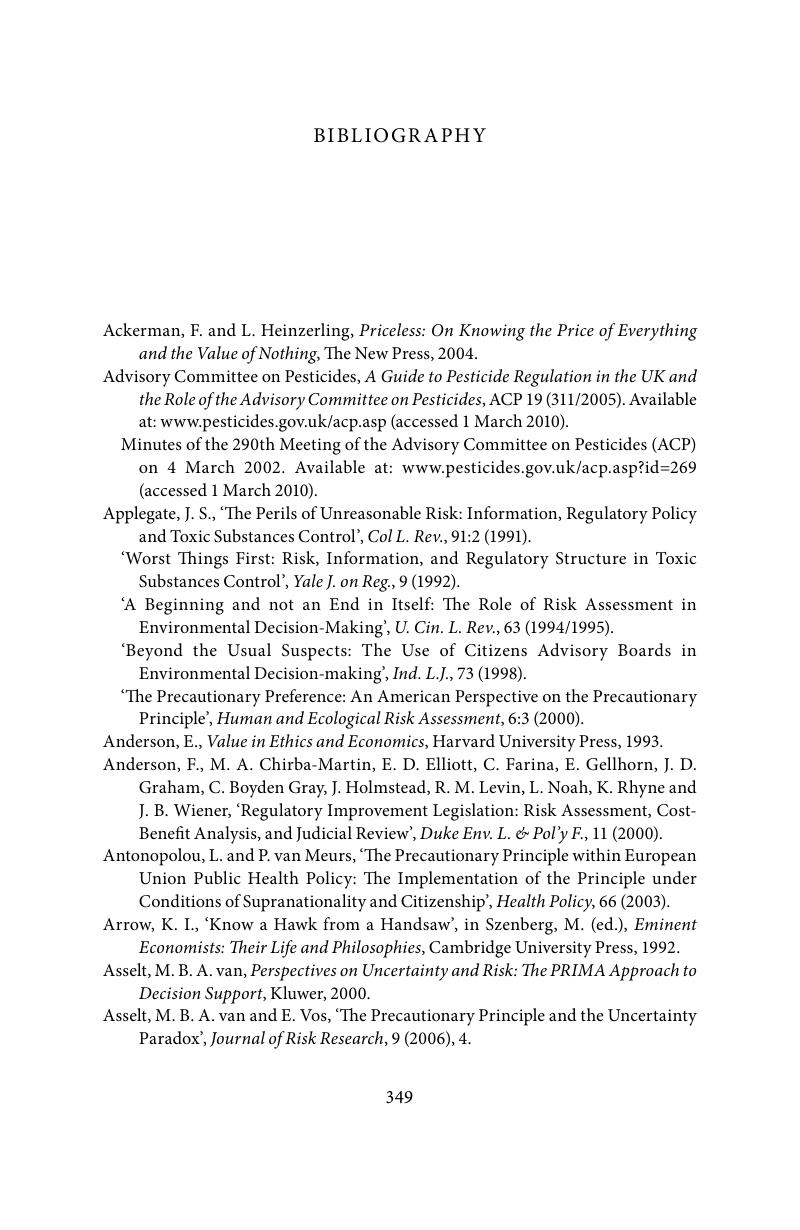Book contents
- Frontmatter
- Contents
- Acknowledgements
- Abbreviations
- Table of Cases
- Table of Legislation
- EU Legislation and Soft Law
- Swedish Legislation, preparatory work, etc.
- United Kingdom
- United States of America
- 1 Introduction
- 2 Risk and uncertainty: basic concepts and tools for the application of the precautionary principle
- 3 The precautionary principle in international law
- 4 The precautionary principle in EU law
- 5 The precautionary principle in Sweden
- 6 The precautionary principle in the United Kingdom
- 7 The precautionary principle in the United States
- 8 Conclusions
- Bibliography
- Index
- References
Bibliography
Published online by Cambridge University Press: 17 November 2010
- Frontmatter
- Contents
- Acknowledgements
- Abbreviations
- Table of Cases
- Table of Legislation
- EU Legislation and Soft Law
- Swedish Legislation, preparatory work, etc.
- United Kingdom
- United States of America
- 1 Introduction
- 2 Risk and uncertainty: basic concepts and tools for the application of the precautionary principle
- 3 The precautionary principle in international law
- 4 The precautionary principle in EU law
- 5 The precautionary principle in Sweden
- 6 The precautionary principle in the United Kingdom
- 7 The precautionary principle in the United States
- 8 Conclusions
- Bibliography
- Index
- References
Summary

- Type
- Chapter
- Information
- The Application of the Precautionary Principle in PracticeComparative Dimensions, pp. 349 - 365Publisher: Cambridge University PressPrint publication year: 2010



